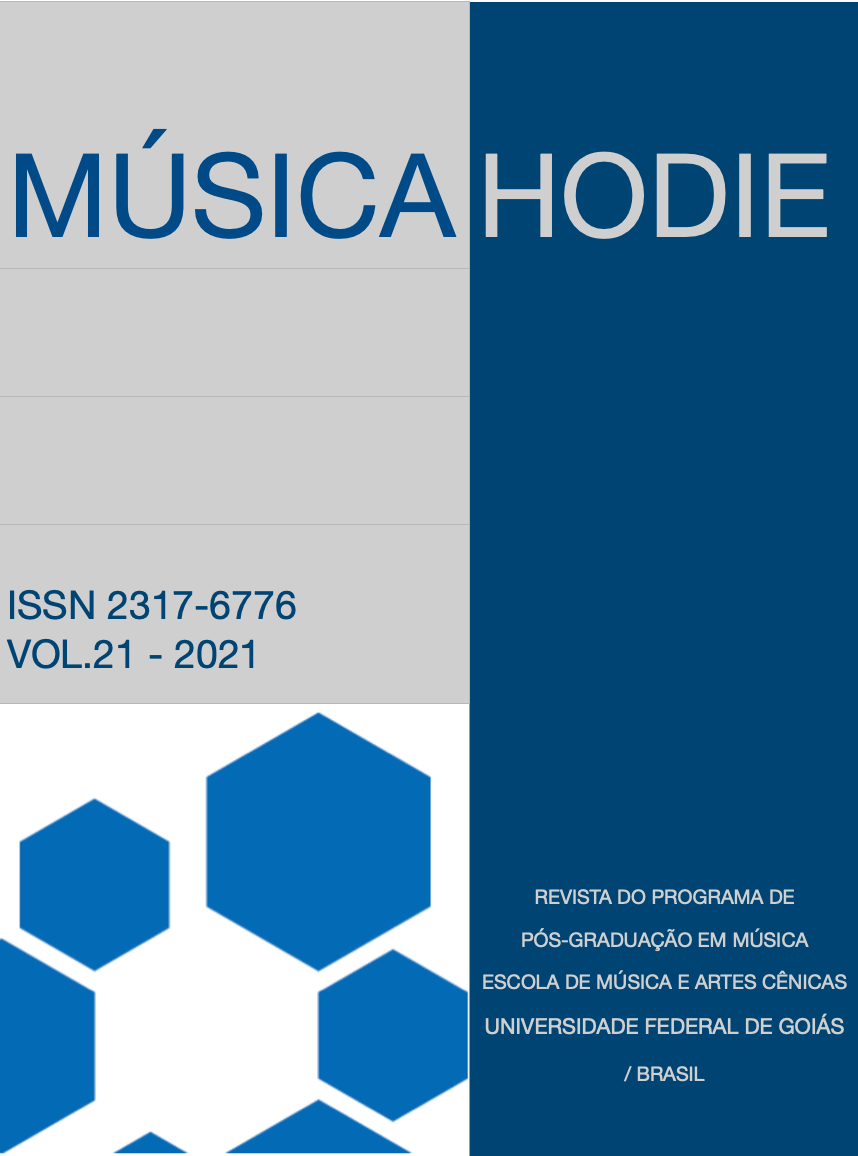Villa-Lobos, from the modern maxixe to the cyclic form
how to become a French musician in Rio de Janeiro
DOI:
https://doi.org/10.5216/mh.v21.61997Keywords:
Villa-Lobos, Cyclic sonata, Vincent d'Indy, String Quartet, SymphonyAbstract
Villa-Lobos, in his first steps as a composer tried in different genres, as popular salon and carnival music, as well “learned” styles like opera, sacred and chamber music; then, he knew and studied the Cours de Composition Musicale (1909) de Vincent d’Indy. His contact with that book begins in 1914 (CORRÊA DO LAGO, 2010, p. 30-31; 80; NÓBREGA, 1969, p. 14).
The Sonata Fantasia n. 2 (1914) for violin and piano, is his first attempt in the realm of cyclic form; it was succeeded by works like the Second Piano Trio (1915), the Second Cello Sonata (1916) and the Second and Third String Quartets (respectively composed in 1915 and 1916). Villa-Lobos’s early symphonies, written between 1916-1919 are allegedly set “in the style of the French composer Vincent d’Indy” (MUSEU VILLA-LOBOS, 2010, p. 34).
D’Indy’s concept of “cyclic sonata” is not merely a question of “style”, but actually related to the formal structure; d’Indy talks about the “cyclic feature”, in which some “permanent themes” and its “conducting motives” establish a sense of dependence between movements of a large-scale piece of music (D’INDY, 1909, p. 375). According d’Indy, such procedures starts with the “Beethovenian genius” and reach its “apex with Cesar Franck”. The ideal of unity can be achieved through “exterior signals, easily recognizable” (D’INDY, 1909, p. 378).
This paper analyses some compositional strategies used by Villa-Lobos in his symphonies and string quartets composed and premiered between 1915 and 1919. In the background, one can see the “Frenchness” growing in Villa-Lobos’s style, as an acceptance strategy in the Rio de Janeiro musical environment.















